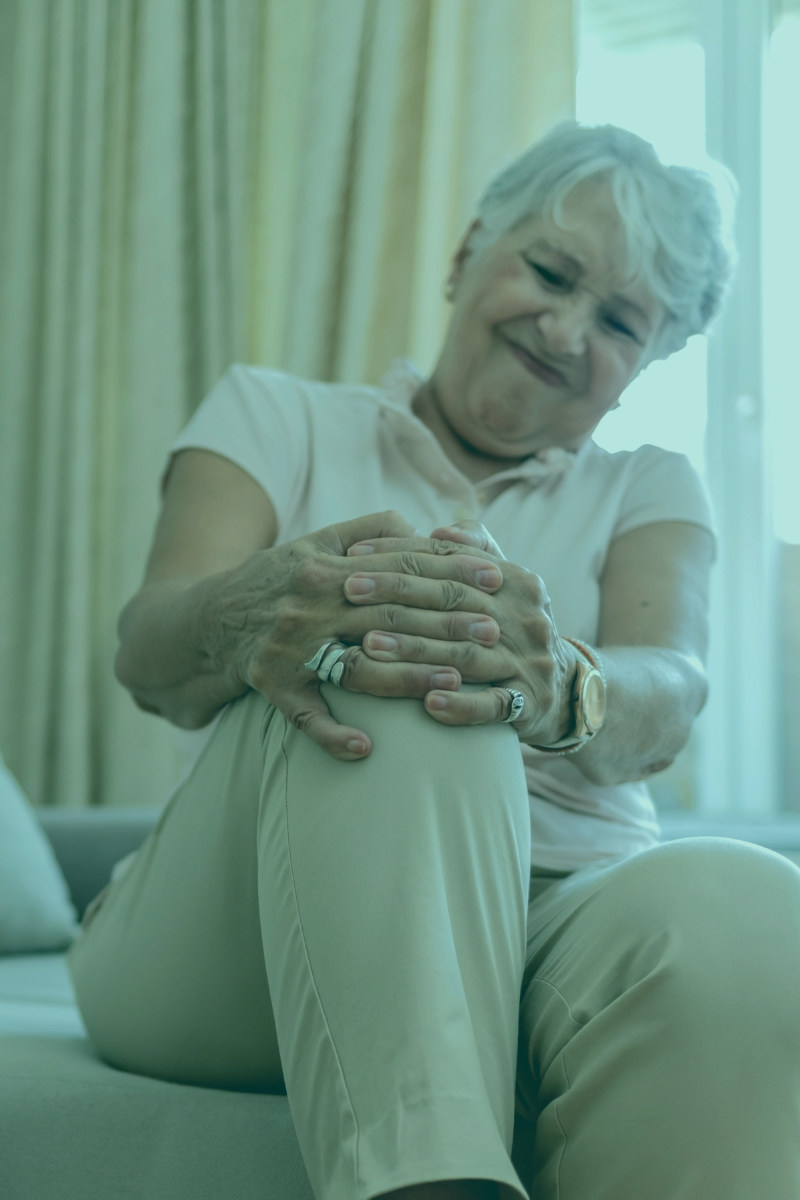Knee osteoarthritis (OA) is a prevalent joint condition affecting millions of people from all walks of life. This degenerative disease often leads to pain, stiffness, and reduced mobility, significantly impacting one's quality of life.
Knee osteoarthritis can be divided into two types, primary and secondary. Primary osteoarthritis is articular degeneration without any apparent underlying reason. Secondary osteoarthritis is the consequence of either an abnormal concentration of force across the joint as with post-traumatic causes or abnormal articular cartilage, such as rheumatoid arthritis (RA).
The defining feature of osteoarthritis is the breakdown and loss of articular cartilage. In the knee, articular cartilage covers the top of the tibia (shinbone), the bottom of the femur (thigh bone) and the back of the patella (kneecap). Articular cartilage protects the surfaces of these bones where they meet at the joint. During the development of osteoarthritis:
- Cartilage weakens. The composition of the articular cartilage changes, becoming weaker. This change in composition is especially common in older age.
- Cartilage becomes damaged. The weakened articular cartilage thins or wears away.
- Cartilage may attempt to heal. The damaged cartilage may attempt to produce new cells, but it is not enough to replace the missing cartilage. In addition, these new cells may grow in irregular, bumpy patterns rather than the smooth pattern of the original cartilage.
- Meniscus damage is likely. Damage to the knee’s meniscus is likely to also occur. Because meniscal cartilage is different from articular cartilage, meniscus damage is considered a separate but related condition to knee osteoarthritis.
When cartilage is damaged, bones experience more friction and impact. This can cause the bone to undergo changes. For example:
- Bone spurs. Abnormal bony growths, called osteophytes or bone spurs, develop on the bone at the knee joint. It is believed that bones produce bone spurs to compensate for deteriorated or missing cartilage by redistributing weight loads. The bone spurs can create more friction in the knee joint, leading to discomfort and pain. It is important to note that bone spurs are a normal sign of aging, and the presence of them alone is not a cause for concern.
- Subchondral bone sclerosis. The surfaces of the tibia and femur that lie just beneath knee cartilage can change in composition and harden. (“Chondral” means cartilage; subchondral bone is located just beneath cartilage. “Sclerosis” means hardening.)
- Cysts and bone marrow lesions. The bone underneath damaged or missing knee cartilage may develop cysts (typically referred to as “subchondral cysts”) and areas of abnormal swelling called bone marrow lesions. These lesions may be associated with knee pain.
Common signs you can look for
Recognizing the early signs of knee osteoarthritis is crucial for timely intervention and management. Some common symptoms include:
- Knee pain, particularly during weight-bearing activities or after prolonged periods of inactivity
- Stiffness and limited range of motion in the knee joint, especially in the morning or after sitting for extended periods
- Swelling and tenderness around the knee joint
- Audible cracking or popping sensations (crepitus) when moving the knee
- Development of bone spurs around the joint, visible on X-rays
- Weakness or instability in the knee, leading to difficulty walking or performing daily activities
Management Options for Knee Osteoarthritis
While knee osteoarthritis is a progressive condition with no cure, several management strategies can help alleviate symptoms and improve joint function. These include:
- Lifestyle modifications: Maintaining a healthy weight through diet and exercise can reduce the strain on the knee joint and alleviate symptoms. Low-impact exercises such as swimming, cycling, and tai chi can improve joint flexibility and strengthen the surrounding muscles without exacerbating pain.
- Medications: Over-the-counter pain relievers such as acetaminophen or nonsteroidal anti-inflammatory drugs (NSAIDs) can help reduce pain and inflammation associated with knee osteoarthritis. In severe cases, corticosteroid injections may be administered directly into the knee joint to provide temporary relief.
- Physio: A tailored exercise program designed by a physio can improve joint stability, range of motion, and muscle strength around the knee. Best practice also includes exercises that focus on neuromuscular control of the knee joint in addition to pure strength. Therapeutic techniques such as manual and soft tissue therapy may also be beneficial
- Assistive devices: Using supportive devices such as knee braces, orthotic shoe inserts, or walking aids can help alleviate pressure on the knee joint and improve mobility, especially during flare-ups or activities that aggravate symptoms.
- Surgical interventions: In cases of severe knee osteoarthritis that do not respond to conservative treatments, surgical options such as arthroscopic debridement, osteotomy, or total knee replacement may be considered.
Conservative management with your physiotherapist should be the first treatment option for your knee osteoarthritis. We have seen several patients be able to forgo the immediate need for surgical intervention while being under our care and guidance. The best strategy is to seek help sooner rather than later, as in some cases that have been left too long, the knee is simply too stiff and too sore to be able to tolerate any physiotherapy intervention.
If you are over the age of 45 and have a stiff and or painful knee, then having a chat with us could be one of the best things you can do for yourself this year. Action now, might save more drastic action later on.
Yours in health
Chris and the team from Out of the Box Physiotherapy
